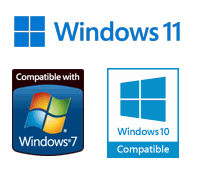Quality Assurance
SCALE is unique in that it has been specifically designed for Quality Assurance purposes to show all stages in the structural calculations which SCALE produces. Thus firms who run their own QA system treat the SCALE calculations as though they were produced by engineers, and put the calculations through their own QA system. SCALE has been in use as part of SAND since April 1986; and available as a separate program since June 1988.
Checking of output
Computers do a lot of tedious work for you, without complaint, thereby allowing you to get on with more interesting things.
However programs are:
- written by humans who make mistakes
- used by humans who make mistakes
- devised from codes of practice which are written by humans who make mistakes.
and computers are:
- designed by humans who make mistakes
- manufactured by humans who make mistakes
- used by humans who make mistakes.
So we need to check all computer output. There are three classes of output from the Fitzroy structural engineering software:
- output from NL-STRESS e.g. a lattice tower
- output from a SCALE element design proforma e.g. a timber beam
- a detail from LUCID or SPADE.
It is clearly not feasible to check all the computations carried out for the analysis of a lattice tower so:
- we make sure we are using an approved program (NL-STRESS is DTp approved ref MOT/EBP/254C)
- we check all the input data with red and yellow pencils
- we make sure that the equilibrium check is what we expect; i.e. the sum of the reactions equals the total loads we have applied in and about the X Y & Z axes
- we carry out a 'compatibility check' at one or two members in the structure (especially for non-linear analyses)
- run the problem on another program (if available)
- check using engineers' arithmetic.
We are able to check all the output from a beam design program in SCALE; and someone should (just to make sure we/they are working to the latest codes). The check should be part of the Q.A. system in operation. Checking methods include:
- line by line check with red and yellow pencils
- running the problem on another program - where available
- check against charts or tables - where available
- engineers' arithmetic
- check by experience.
Senior engineers will probably use engineers' arithmetic rather than do a full line by line check, or rely on their experience. An engineer who has designed five low rise RC framed buildings will know what, for example, 4/T25's in a 300x300 column will carry, by experience.
LUCID & SPADE details should be checked by the traditional method, using red and yellow pencils.


